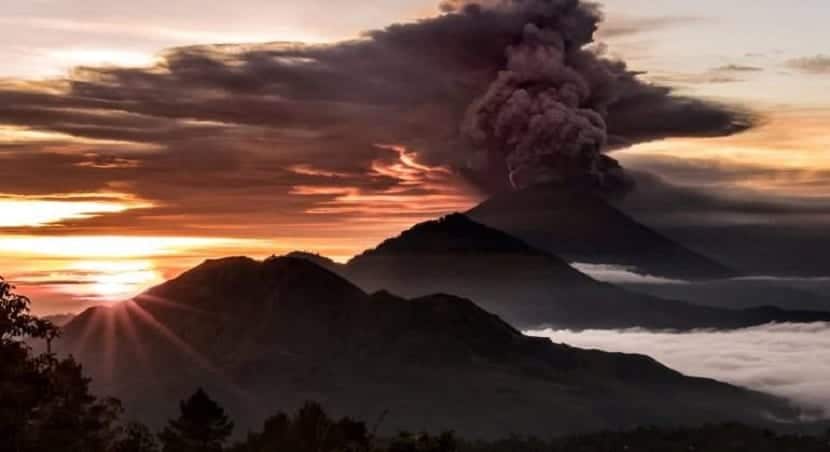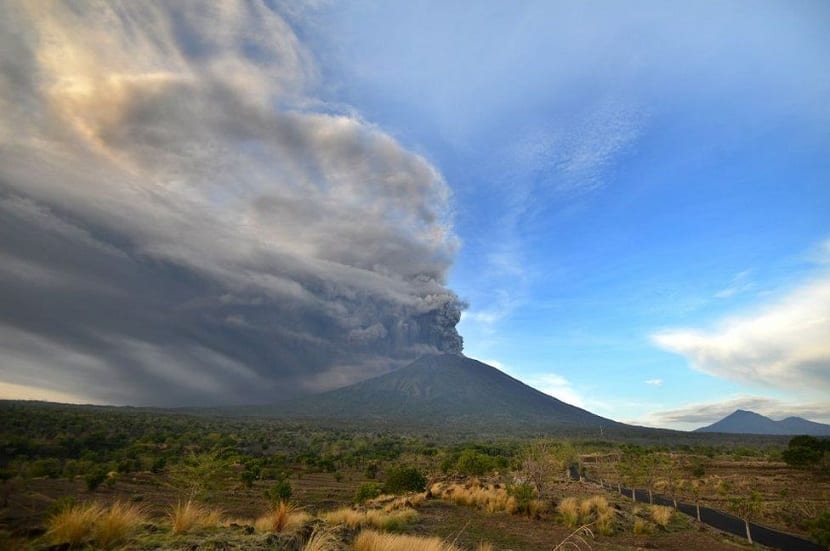
On Mount Agung you will find Bali volcano and it could be on the verge of a major eruption. Images of it have been taken and they have also been able to explain the history of what happens inside.
Do you want to know more about the Bali volcano and its history?
Bali volcano

Mount Agung has been experiencing higher seismicity in the last two months. Although not in a predetermined way, the increase in seismicity of a volcanic area corresponds to its possible eruption. It has found the largest fracture of the rocks inside the volcano ever seen, since the magma, being a volatile mixture of molten rocks, fluids and gases, has been moving from the depths of the earth to the top little by little, cracking the walls.
In recent weeks it has been possible to observe thick plumes of steam and ash rising from the top of the volcano and lava on the surface of the crater. In addition, small rivers of cold mud have been found that have flowed through the valleys.
In the first photos taken a few months ago, no one could have assured that the volcano was being prepared for an eruption. However, the increase in seismicity and tremors that shook the area, was alerting the population about the imminent eruption.
Characteristics of the volcano

The most that has been observed in this volcano is an increase in vapor caused, simply, by the water inside the volcano heating up and rising to the surface. The mountain's mixture of volcanic ash and lava is like a sponge, and in rainy Indonesia, the water soaks and stays there until it warms up.
Since then, the volcano has remained calm and stable until, this Tuesday, the volcano began to expel thick ash and steam, starting an eruption for more than 50 years. This has been a phreatic eruption. That is, the expulsion of pressurized steam from the interior of the volcano because the magma within it is heating the water. This can lead to a build-up of pressure causing an explosion to blast rocks and chunks from the crater into small pieces of ash.
The magma has been moving from within and is breaking up rocks as it progresses. The water inside the volcano gets hotter and hotter and the water vapor increases the pressure, reaching a point where the rock it can no longer contain it and it fractures. This is what we are seeing now. The magma has moved so high in the volcano that there was not enough rock to contain it, so it is turning into small pieces of ash and spreading.
Study of the situation of the volcano

The volcano's reactions are being studied and how it will evolve. For this, the characteristics of the eruption columns or the ash plumes are looked at. If these go up regardless of the wind, it means that the speed they have is high. In a volcano, the amount of ash and the speed at which it comes out determines how high a plume can go and thus be able to assess possible damage from the volcano's reach.
At the eruption of Mount Agung in 1963, eruptions reached up to 26 km (16 miles) above sea level. In volcanoes like Agung, magma can travel 5-15 km to the surface from deep within the earth, leading to an eruption.
One of the reasons the authorities raised the alert level to four is because the magma is getting higher and higher. The latest images from Bali point to a new development, which are volcanic mudflows, or lahars. Ash and rocks that settle around the volcano when combined with rain can create dangerous fast-flowing rivers with the consistency of water to wet concrete, and they can move and precipitate.